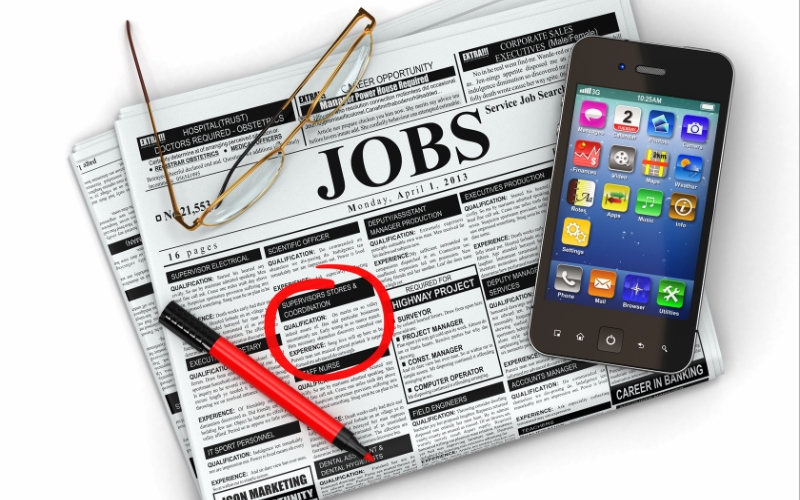- Craft Clear Descriptions to Attract a Diverse Workforce
- Highlight Inclusive Hiring in Job Listings
- Emphasize Essential Skills for a Diverse Workforce
- Utilize Gender-Neutral Language for Inclusive Hiring
- Showcase Diversity Recruitment Strategies in Listings
- Describe a Dynamic Workforce Culture
- Continuously Refine Your Diversity Recruitment Strategies
Building a dynamic workforce is essential for any organization striving to thrive in today’s fast-paced and diverse business landscape. In this article, “7 Powerful Strategies to Build a Dynamic Workforce,” we explore the critical steps necessary to attract, develop, and retain a team that excels through diversity and inclusion. A dynamic workforce is not just about filling positions; it’s about creating a culture where diverse perspectives are valued a
nd innovation is fostered.
By implementing the strategies outlined in this article, your organization can build a resilient and adaptable team that is better equipped to navigate the complexities of the modern business world. These strategies, ranging from crafting inclusive job descriptions to continuously refining your recruitment practices, are designed to help you build a workforce that drives success, growth, and innovation. Whether you’re looking to improve your existing processes, expand into new markets, or start from scratch, these insights will guide you in creating a thriving, dynamic workforce capable of meeting future challenges head-on.
Craft Clear Descriptions to Attract a Diverse Workforce

When crafting inclusive job descriptions, it’s essential to structure them in ways that appeal to a wide range of candidates, ensuring your organization attracts a dynamic workforce. Using inclusive language is critical to avoid unintentionally alienating potential applicants. Overly technical jargon or niche industry terms can create barriers, discouraging qualified candidates from applying, especially those from non-traditional backgrounds. Simplicity, clarity, and accessibility are key elements that ensure job descriptions are approachable for everyone, contributing to building a dynamic workforce.
Avoiding Exclusionary Language and Emphasizing Inclusion
Language has a significant impact on how job postings are perceived. It’s essential to eliminate unconscious bias by using gender-neutral terms and avoiding stereotypes. For example, instead of words like “dominant” or “competitive,” which may attract only a specific group of candidates, opt for terms such as “collaborative” and “goal-oriented” that resonate with a broader audience. This strategy not only enhances inclusiveness but also helps you attract a dynamic workforce with diverse skills and perspectives.
Additionally, consider incorporating inclusive phrases like “all backgrounds are encouraged to apply.” This sends a clear message that the organization values diversity and inclusion, which is crucial for building a dynamic workforce that thrives on varied perspectives. Highlighting your company’s commitment to inclusivity encourages candidates who might otherwise hesitate to apply, fostering a more diverse talent pool.
Clarity in Job Responsibilities and Qualifications
A well-crafted job description should offer clarity about the role’s responsibilities, daily tasks, and required skills, giving candidates a realistic understanding of what is expected. This transparency makes it easier for individuals from various backgrounds to envision themselves succeeding in the role, regardless of prior industry exposure. For example, breaking down technical requirements into easy-to-understand language can empower candidates from different fields to apply, contributing to a more dynamic workforce.
At the same time, it’s essential to differentiate between “must-have” qualifications and “nice-to-have” skills. Candidates from underrepresented groups often hesitate to apply if they don’t meet 100% of the listed criteria. By keeping job descriptions concise and focusing on essential qualifications, you increase the likelihood of attracting candidates with diverse experiences, enriching your dynamic workforce with fresh ideas and approaches.
Highlighting the Value of Diversity and Inclusion
Promoting the company’s commitment to diversity and inclusion within the job posting is an excellent way to attract a dynamic workforce. Including statements about your organization’s culture, values, and employee resource groups sends a powerful message. It emphasizes that the company is a place where individuals from different backgrounds can thrive. For instance, mentioning initiatives related to diversity training, mentorship programs, or employee networks further reinforces your company’s inclusive practices.
Moreover, using real examples of diversity efforts or sharing testimonials from current employees helps establish trust and authenticity. This approach makes it easier for potential candidates to visualize themselves in the organization, motivating them to apply and contribute to a dynamic workforce.
Flexible Work Arrangements and Accessibility
Incorporating flexible work arrangements in job descriptions is a highly effective way to attract a dynamic workforce. Candidates today, particularly those from diverse backgrounds, place a high value on work-life balance, accessibility, and flexibility. Offering options such as remote work, hybrid models, flexible hours, or compressed workweeks demonstrates your company’s adaptability and willingness to embrace different working styles. This approach not only appeals to parents and caregivers but also draws talent from various geographic locations, expanding your reach beyond local candidates.
Furthermore, proactively mentioning accommodations for employees with disabilities—such as accessible workspaces, assistive technology, or modified schedules—signals your commitment to inclusivity. A dynamic workforce thrives when employees feel empowered to work in ways that suit their individual needs without compromising productivity. Providing these accommodations upfront reassures candidates that your organization genuinely values inclusion, mental health, and employee well-being. This focus on flexibility helps build an engaged, diverse team that drives innovation and long-term success.
Highlight Inclusive Hiring in Job Listings

Incorporate inclusive hiring practices directly into your job listings to attract a diverse workforce. This approach ensures you build a dynamic workforce capable of driving innovation and solving problems with varied perspectives. Begin by explicitly stating that your organization values diversity and encourages applicants from all backgrounds to apply. For example, including a statement like “We welcome applications from individuals of all ethnicities, genders, orientations, and abilities” can broaden the scope of your applicant pool. It shows that your hiring strategy is deliberate, fostering an environment that embraces inclusivity. This not only aligns with modern diversity recruitment strategies but also signals to potential candidates that your company actively promotes a positive workplace culture.
Moreover, inclusive hiring isn’t just about compliance or meeting quotas; it’s about strategically building a dynamic workforce that can adapt to changing market needs. Organizations with inclusive hiring practices are better equipped to foster creativity and innovation by bringing together individuals with varied viewpoints and experiences. This diversity of thought enables businesses to explore fresh ideas and solutions, enhancing both productivity and employee satisfaction.
To further attract a dynamic workforce, you can tailor your job postings to emphasize growth opportunities and a supportive work environment. Highlight any initiatives that promote inclusivity, such as mentorship programs, employee resource groups, or flexible working arrangements. Transparency in your company’s commitment to fostering diversity and inclusion will resonate with candidates seeking a workplace where they feel valued and empowered.
Finally, inclusive hiring is an ongoing process that requires continuous evaluation. Collecting feedback from employees and adjusting your recruitment strategies accordingly ensures that your efforts to build a dynamic workforce remain effective and sustainable. This approach not only improves employee retention but also strengthens your company’s reputation as an employer of choice. By integrating inclusive practices, businesses can cultivate a dynamic workforce that thrives on collaboration, innovation, and shared success.
Emphasize Essential Skills for a Diverse Workforce

When writing job descriptions, it’s essential to focus on the skills and qualifications that are truly necessary for the role. In today’s competitive market, attracting a dynamic workforce means creating job postings that are both inclusive and appealing to a broad spectrum of talent. Unfortunately, many job listings contain unnecessarily long lists of requirements, which can discourage highly capable candidates—particularly those from underrepresented groups—from applying. To attract a dynamic workforce, it’s crucial to evaluate whether certain qualifications, such as specific degrees, certifications, or a fixed number of years of experience, are absolutely essential or if transferable skills and relevant experience could suffice.
This thoughtful approach ensures your job descriptions align with modern diversity recruitment strategies. Rather than creating rigid expectations, focus on the core competencies that the role demands. For example, you may find that some roles do not require an advanced degree if a candidate has practical experience or equivalent skills. Reducing these barriers makes your postings more accessible and increases the chances of hiring a dynamic workforce with diverse perspectives, problem-solving approaches, and innovative ideas.
By prioritizing essential skills and placing value on transferable experiences, your company can build a more adaptable and resilient team. A dynamic workforce thrives in an environment that values flexibility, new ideas, and diverse thinking. Encouraging applications from non-traditional candidates also helps address skill gaps and future-proofs your organization by nurturing employees with varied backgrounds. This not only enriches your talent pool but also promotes inclusivity and better collaboration among team members.
Ultimately, the goal is to foster a work environment that thrives on diversity. Ensuring job descriptions are straightforward, focused, and inclusive increases your ability to attract a dynamic workforce. When candidates feel welcomed and recognized for their unique talents, they are more likely to engage meaningfully with your company, driving innovation and long-term success
Utilize Gender-Neutral Language for Inclusive Hiring
Gender-neutral language is a critical component of inclusive hiring, and it plays an essential role in fostering a dynamic workforce. To attract a diverse workforce, job descriptions should avoid gender-specific terms and instead use neutral alternatives. For example, rather than using pronouns such as “he” or “she,” opting for “they” ensures that the language is inclusive. Rephrasing sentences to eliminate pronouns altogether can further enhance inclusivity. Such intentional adjustments make job postings more welcoming to candidates of all backgrounds, laying the foundation for a dynamic workforce that thrives on diversity and collaboration.
In addition to neutral pronouns, it is important to be mindful of gender-coded words that could unintentionally discourage potential candidates from applying. For instance, terms like “dominant” or “aggressive” may appeal more to male candidates, while words such as “supportive” or “nurturing” might attract more female candidates. These subtle nuances in language can affect who feels encouraged to apply, ultimately shaping the composition of your team. Building a dynamic workforce requires conscious efforts to eliminate these biases and ensure your job descriptions resonate with all demographics.
Employers can also leverage tools like a gender decoder to refine their language and align it with their diversity recruitment goals. A gender decoder helps identify and replace gender-coded words, ensuring that your job descriptions appeal to a wider talent pool. This proactive approach promotes an inclusive environment, essential for creating a dynamic workforce that brings together different perspectives and skill sets.
By eliminating exclusionary language, companies not only attract a more diverse talent pool but also cultivate a dynamic workforce capable of innovative problem-solving. Inclusivity in job descriptions ensures that everyone, regardless of gender identity or background, feels encouraged to apply. This approach strengthens your organization’s ability to adapt to changing market demands by tapping into the strengths of a truly dynamic workforce.
Showcase Diversity Recruitment Strategies in Listings
Highlighting your company’s diversity recruitment strategies within job descriptions is a powerful way to attract and engage a diverse workforce. In today’s competitive talent market, candidates are not just looking for good compensation but are drawn to workplaces that align with their values, including diversity and inclusion. By openly sharing your organization’s efforts in fostering an inclusive culture, you increase the likelihood of attracting top-tier talent from all backgrounds. A job description that reflects these values helps create the perception that your company is forward-thinking and committed to building a dynamic workforce that thrives on varied perspectives and experiences.
If your organization offers flexible work arrangements, mentorship programs, or Employee Resource Groups (ERGs) for underrepresented groups, these benefits should be prominently featured in your job postings. For instance, mentioning flexible working hours or remote work options can be especially appealing to candidates with caregiving responsibilities, such as parents or those caring for elderly family members. Highlighting these benefits in job descriptions helps convey your company’s willingness to support employees’ personal and professional needs, fostering an environment where a dynamic workforce can flourish.
Mentorship programs also play a crucial role in supporting diverse talent, particularly those from underrepresented backgrounds. By pairing new hires with experienced employees, companies demonstrate their investment in the growth and development of all employees. When these mentorship opportunities are highlighted in job descriptions, candidates from varied backgrounds are more likely to see the potential for long-term growth within the organization. A dynamic workforce emerges when employees feel valued and supported throughout their careers, regardless of their starting point.
Employee Resource Groups (ERGs) are another important element to feature in job listings. ERGs provide a platform for employees from different backgrounds to connect, share experiences, and contribute to the organization’s inclusivity efforts. Whether your company has ERGs focused on race, gender, LGBTQ+ inclusion, or accessibility, mentioning these groups can appeal to candidates looking for a sense of belonging within the workplace. A dynamic workforce is more engaged and productive when employees feel a sense of community and can bring their whole selves to work.
Additionally, mentioning support for professional development initiatives such as leadership training, conferences, or certifications further demonstrates your organization’s commitment to building a dynamic workforce. Candidates are more likely to apply when they see that your company is invested in their personal growth and career trajectory. This not only attracts diverse talent but also improves retention rates, as employees are more inclined to stay with companies that support their ambitions.
Describe a Dynamic Workforce Culture
A company’s culture plays a critical role in attracting and retaining a diverse workforce. When crafting job descriptions, it’s essential to communicate the values and behaviors that reflect your company’s commitment to diversity, equity, and inclusion (DEI). Highlighting specific aspects of your company culture—such as open communication, continuous learning, and respect for individuality—creates a compelling narrative that appeals to a broader range of candidates. A dynamic workforce thrives in an environment where differences are not just tolerated but actively celebrated, fostering innovation and creative problem-solving.
Emphasizing values like collaboration, innovation, and respect for diverse perspectives within job postings signals that your organization embraces people of all backgrounds. This not only attracts candidates seeking an inclusive environment but also sets the tone for what they can expect upon joining the team. For instance, mentioning that diverse viewpoints are encouraged during decision-making processes reflects a culture that values the input of all employees, regardless of their position or background.
Moreover, job seekers today look for more than just a paycheck—they seek workplaces where they feel valued, engaged, and empowered to contribute meaningfully. By positioning your company as one that champions diversity and inclusion, you build trust and credibility, which encourages candidates to envision themselves thriving within your dynamic workforce. This approach lays the foundation for a team that is not
Continuously Refine Your Diversity Recruitment Strategies
Attracting a diverse workforce is an ongoing process that requires regular assessment and refinement of your diversity recruitment strategies. After posting job descriptions, gather feedback from applicants and current employees to see if your listings are resonating with a broad audience. Analyze the diversity of your applicant pool and make adjustments as necessary. This could involve tweaking the language used in job descriptions, altering the qualifications required, or expanding the channels through which you advertise open positions. By continuously refining your approach, you ensure that your job descriptions remain effective tools in attracting a dynamic and diverse workforce. This commitment to improvement not only strengthens your recruitment efforts but also reinforces your company’s dedication to fostering an inclusive workplace

